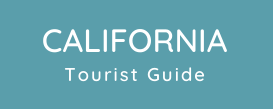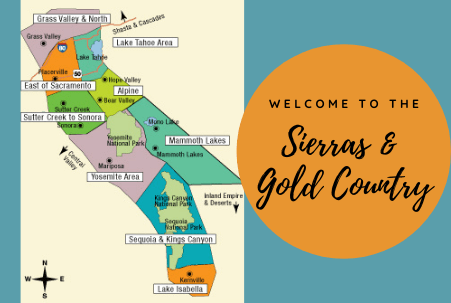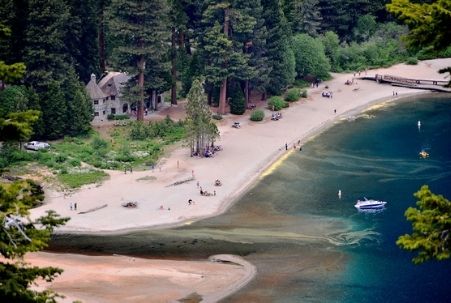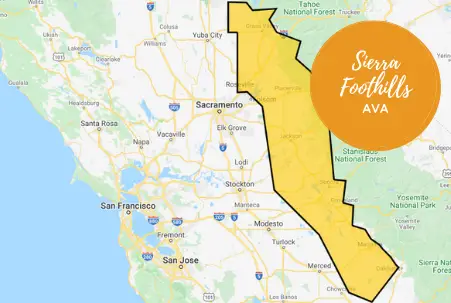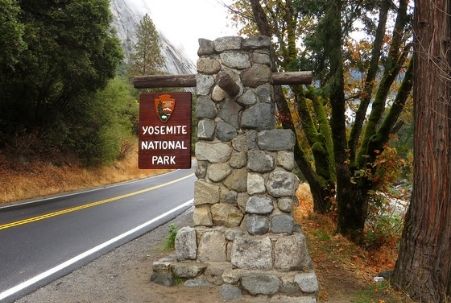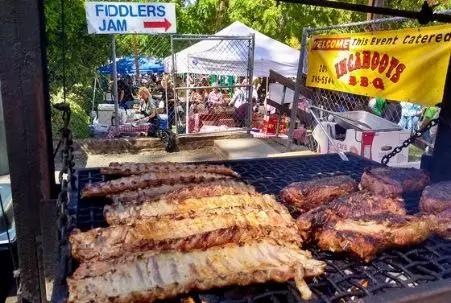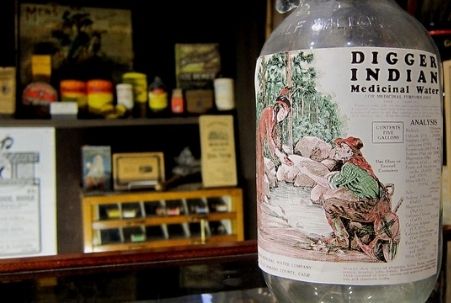Gold Country Tourist Attractions
This idyllic area’s “Mother Lode” nickname pays tribute to its history as a top gold-producing region, but it could also be used to describe its abundance of man-made and natural attractions. The hills and forests are a feast for the eyes, and evidence of the region’s importance in California’s history is present almost everywhere you look.
The list below — arranged generally as you would drive to them if traveling from north to south — will introduce you to some of our favorite Gold Country attractions. To plan your visit, you should also check out the area’s museums and the fabulous Gold Country wineries — some of which are attractions in their own right. There’s so much to see and do in this historic part of California!
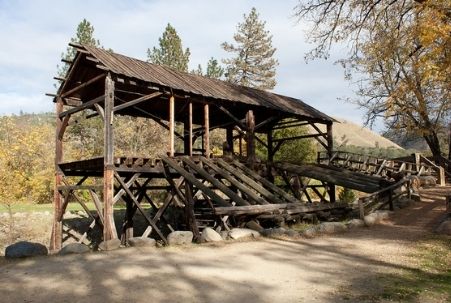 Marshall Gold Discovery State Historic Park, Coloma – Includes a working, to-scale replica of Sutter’s Mill, and a pathway takes you to the actual site where the original mill once stood. Further down the path is the site on the American River where James W. Marshall pulled out the first piece of gold, the beginning of the California Gold Rush. Historic photographs in the nearby museum show the site’s original buildings against a backdrop of the same hills, mountains and streams you see today. (parks.ca.gov/?page_id=484)
Marshall Gold Discovery State Historic Park, Coloma – Includes a working, to-scale replica of Sutter’s Mill, and a pathway takes you to the actual site where the original mill once stood. Further down the path is the site on the American River where James W. Marshall pulled out the first piece of gold, the beginning of the California Gold Rush. Historic photographs in the nearby museum show the site’s original buildings against a backdrop of the same hills, mountains and streams you see today. (parks.ca.gov/?page_id=484)
Amador Flower Farm, Plymouth – Specializing in daylilies (over 650 varieties), the farm’s 12 acres also include over 200 unusual perennials. (amadorflowerfarm.com)
The Preston School of Industry (known as “The Castle”), Ione – Built between 1890-1894 to serve as a school for juveniles referred by the courts, The Castle is currently not in use and the grounds are not open to the public, but there are several vantage points in Ione for photographing this famous landmark. (ione-ca.com)
Kennedy Gold Mine, Jackson – Open Saturdays, Sundays and holidays, March through October, you can gain new insight into the miner’s way of life on the educational surface tours offered here. If the mine is closed during your stay, you may still want to visit to see the mine’s Kennedy Tailings Wheels that once lifted tons of gravel over two hills. The relics are popular with photographers, who often frame the hillside mine structures through the standing wheel’s giant spokes. (kennedygoldmine.com)
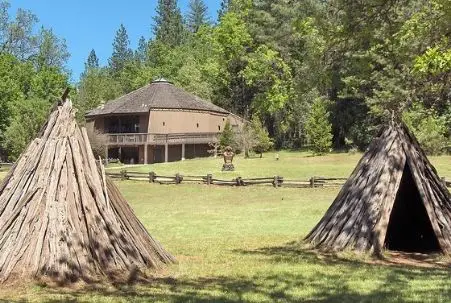 Indian Grinding Rock State Historic Park, Pine Grove (near Jackson) – Nestled in a valley of oak trees that once provided the native Americans who inhabited this area with acorns which they ground into flour, the park was created in 1968 and preserves the largest collection of bedrock mortars in North America. There is a museum and a Miwok village complete with a ceremonial hun’ge (roundhouse). The park’s main grinding rock also features a number of decorative carvings (circles, wheels, animal and human tracks, wavy lines, etc.), some of which are believed to be 2000-3000 years old and are becoming difficult to see. (parks.ca.gov/?page_id=553)
Indian Grinding Rock State Historic Park, Pine Grove (near Jackson) – Nestled in a valley of oak trees that once provided the native Americans who inhabited this area with acorns which they ground into flour, the park was created in 1968 and preserves the largest collection of bedrock mortars in North America. There is a museum and a Miwok village complete with a ceremonial hun’ge (roundhouse). The park’s main grinding rock also features a number of decorative carvings (circles, wheels, animal and human tracks, wavy lines, etc.), some of which are believed to be 2000-3000 years old and are becoming difficult to see. (parks.ca.gov/?page_id=553)
Four Caverns to Tour, various locations from Pinegrove to Columbia – Any discussion of Gold Country tourist attractions wouldn’t be complete without mentioning what you can find here if you venture beneath rolling landscape. Picture an inverted replica of the Sierra Nevada Mountains range, and you can begin to imagine the vast network of caves, caverns, tunnels and mine shafts that awaits you. While some are man-made, others are natural phenomenon that have been carved by water seeping through the limestone rock over the last hundreds of millions of years. From north to south, the four caverns offering tours are (1) Black Chasm Cavern, near Pinegrove; (2) California Cavern, between Mountain Ranch and Sheep Ranch; (3) Mercer Caverns, near Murphys; and (4) Moaning Caverns, near Vallecito (between Angels Camp and Columbia). Follow the links for information about the guided tours on offer. They are generally accessible to visitors with no walking impairments, and the 55-to-60-degrees underground environment can offer a lovely respite during a hot summer day!
Copperopolis – Once a thriving 1800’s mining town, Copperopolis Town Square has been reborn with a blend of shops, restaurants and residential lofts. This new pedestrian-oriented development was designed to pay homage to the town’s mining history within the context of a luxurious and convenient modern retail setting. (coppervalley.com)
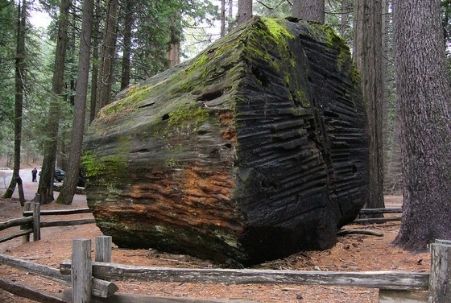 Calaveras Big Trees State Park, Arnold – Some of the planet’s largest living organisms. Tourists from around the world follow the well-trampled trails through the North Grove, but the remote South Grove’s five-mile loop (10 miles from Highway 4) is highly recommended. This park is toward the southern end of the Ebbetts Pass Scenic Byway, a lovely — albeit very twisty-and-turny — drive that stretches from Markleeville to Arnold. (parks.ca.gov/?page_ID=551)
Calaveras Big Trees State Park, Arnold – Some of the planet’s largest living organisms. Tourists from around the world follow the well-trampled trails through the North Grove, but the remote South Grove’s five-mile loop (10 miles from Highway 4) is highly recommended. This park is toward the southern end of the Ebbetts Pass Scenic Byway, a lovely — albeit very twisty-and-turny — drive that stretches from Markleeville to Arnold. (parks.ca.gov/?page_ID=551)
Columbia State Historic Park, Columbia – The term “state historic park” may be misleading; instead, think “amusement park meets living museum.” This is a real working town – with shops, restaurants, theaters and even a fantastic hotel – and costumed docents wander the streets and realistically portray 1850-70s life. It’s as if the entire town is frozen in time, just waiting for you to come experience it. Children and adults alike delight in climbing aboard an authentic stage coach, watching candy being made, sipping sarsaparilla at the town saloon or dipping their own candles. (visitcolumbiacalifornia.com)
Railtown 1897 State Historic Park, Jamestown – Home to one of the nation’s last authentic, operating railroad roundhouses, Railtown’s locomotives and cars have appeared in over 200 film and TV productions, including High Noon, Back to the Future 3 and Petticoat Junction. (railtown1897.org/visit/general-information)
Technically, these last three would more properly be categorized “Sierra Tourist Attractions,” but since an article with that title has yet to be written and because they’re all favorite stops for photographers we’ll keep them here for now. Frankly, there’s a whole host of other attractions to include in that still-to-be-written article since Hwy. 395 is scenic, kind of quirky and pretty incredible. If you’re planning on driving Hwy. 395, you may want to search for information about its points of interest — like the June Lake Loop, Mammoth Lakes and the Mammoth Mountain Ski Resort, Rainbow Falls, Laws Train Museum, the Ancient Bristlecone Forest, and even further south into our Deserts & Inland Empire area where you’ll find the Eastern California Museum, the Alabama Hills and the Lone Pine Film Museum. So many articles to write about cool things to see and do in California, so little time!
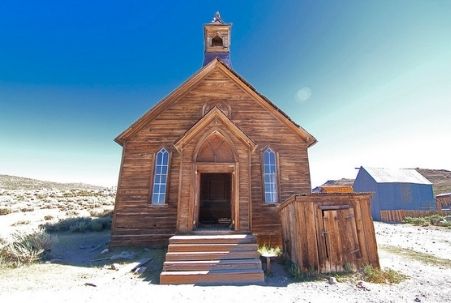 Bodie State Historic Park, Bridgeport – Designated a National Historic Site and a State Historic Park in 1962, this 19th century ghost town is being preserved in a state of arrested decay and is popular with photographers. (parks.ca.gov/?page_id=509)
Bodie State Historic Park, Bridgeport – Designated a National Historic Site and a State Historic Park in 1962, this 19th century ghost town is being preserved in a state of arrested decay and is popular with photographers. (parks.ca.gov/?page_id=509)
Mono Lake, Lee Vining – This personal favorite Gold Country tourist attraction is a dry Great Basin oasis and vital habitat for millions of migratory and nesting birds. It is also one of the oldest lakes in the western hemisphere — a hauntingly beautiful, immense inland sea. The lake fills a 695-square mile natural basin. (monolake.org)
Silver City Ghost Town, Bodfish – A composite “ghost” town with buildings from the mining camps of Keyesville, Whiskey Flat, Old Isabella, Claraville, Hot Springs, Kernvale, Miracle and Southfork. (lakeisabella.net/silvercity/)
There are, of course, also three incredible National Parks in the Sierras & Gold Country area — Yosemite, King’s Canyon and Sequoia — and many California State Parks (choose either Gold Country or High Sierras in the Region drop-down list there to see the area’s offerings), in addition to the ones we’ve mentioned here. And, while it’s neither a national or state park, there’s so much to see and do at Lake Tahoe that you’re almost sure to wonder, “Why not?”
Photo of Sutter’s Mill by Nick Ares via flickr (Creative Commons); Photo of Indian Grinding Rock State Historic Park by Bill Williams via flickr (Creative Commons); Photo of Calaveras Big Trees State Park by Alice via flickr (Creative Commons); and Photo of Bodie Ghost Town Church by Jim Bahn via flickr (Creative Commons).
